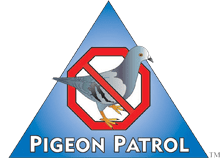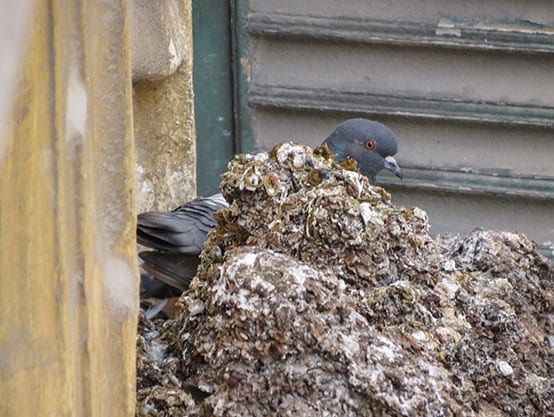
by Pigeon Patrol | Jul 5, 2021 | pet bird, Pigeon Control, Pigeon Droppings, Pigeon Patrol's Services, Pigeon Predators
What Is Bird Flu?
Bird flu, or avian influenza, is a viral infection spread from bird to bird. The most common kind of bird flu is the H5N1 strain. It’s mostly a threat to birds and doesn’t spread easily among people, but there was a major outbreak of bird flu in people in 2014. The very few cases of human-to-human transmission were among people with exceptionally close contact, such as a mother who caught the virus while caring for their sick infant.
Migrating water fowl — most notably wild ducks — are the natural carriers of bird flu viruses. It’s suspected that infection can spread from wild fowl to domestic poultry.

a pigeon bird standing by guano manure
How Do Humans Get Bird Flu?
People catch bird flu by close contact with birds or bird droppings.
In the 2014 outbreak, some people caught H5N1 from cleaning or plucking infected birds. There were reports in China of infection via inhalation of aerosolized materials in live bird markets. It’s also possible that some people were infected after swimming or bathing in water contaminated with the droppings of infected birds. And some infections have occurred in people who handle fighting cocks.
People don’t catch the virus from eating fully cooked chicken or eggs.
There were a few cases where one infected person caught the bird flu virus from another person, but only after close personal contact.
In Indonesia in 2006, bird flu spread to eight members of one family. Seven of them died. It’s not clear exactly how this happened. Family members likely had similar contacts with infected birds. They may also have shared genes that made them particularly susceptible to the virus. However, casual contact does not seem to be involved.
Has Bird Flu Been Seen in the U.S.?
Various strains of bird flu pop up in U.S. poultry from time to time. When they do, all affected poultry flocks are culled.
For example, in 2004, a highly dangerous bird flu strain appeared in a Texas chicken flock. The outbreak involved an H5N2 virus (not the H5N1 bird flu). By April 2004, the outbreak had been eradicated. No human infections were detected.
What Are the Symptoms of Bird Flu in People?
Bird flu symptoms in people can vary. It may start out with normal flu-like symptoms. Sometimes, this can worsen to become a severe respiratory disease that can be fatal.
In February 2005, researchers in Vietnam reported human cases of bird flu in which the virus infected the brain and digestive tract of two children. Both died. These cases show that bird flu in humans may not always look like typical cases of flu.
Is There a Bird Flu Vaccine?
Yes. The FDA approved the first vaccine to prevent human infection with one strain of the bird flu in 2007. But it’s not been made commercially available to the general public. The U.S. government purchased the vaccine in case it needed to be distributed by public health officials.
Is There a Treatment for Bird Flu?
The flu drugs oseltamivir (Tamiflu), peramivir (Rapivab), or zanamivir (Relenza) may help treat bird flu in people, although more studies are needed. These drugs must be given soon after symptoms appear.
Source
Pigeon Patrol Products & Services is the leading manufacturer and distributor of bird deterrent (control) products in Canada. Pigeon Patrol products have solved pest bird problems in industrial, commercial, and residential settings since 2000, by using safe and humane bird deterrents with only bird and animal friendly solutions. At Pigeon Patrol, we manufacture and offer a variety of bird deterrents, ranging from Ultra-flex Bird Spikes with UV protection, Bird Netting, 4-S Bird Gel and the best Ultrasonic and audible sound devices on the market today.
Voted Best Canadian wholesaler for Bird Deterrent products ten years in a row.
Contact us at 1- 877– 4– NO-BIRD, (604) 585-9279 or visit our website at www.pigeonpatrol.ca
Pigeon/Pigeon Patrol / Pigeons Roosting / Vancouver Pigeon Control /Bird Spikes / Bird Control / Bird Deterrent / Pigeon Deterrent? Surrey Pigeon Control / Pest /Seagull deterrent / Vancouver Pigeon Blog / Birds Inside Home / Pigeons in the cities / Ice Pigeons/ What to do about pigeons/ sparrows , Damage by Sparrows, How To Keep Raccoons Away, Why Are Raccoons Considered Pests/ De-fence / Pigeon Nesting/ Bird Droppings / Pigeon Dropping/ woodpecker control/ Professional Bird Control Company/ Keep The Birds Away/ Birds/rats/ seagull/pigeon/woodpecker/ dove/sparrow/pidgeon control/pidgeon problem/ pidgeon control/flying rats/ pigeon Problems/ bird netting/bird gel/bird spray/bird nails/ bird guard
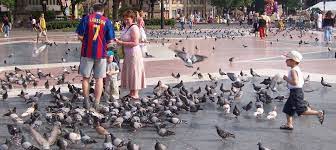
by Pigeon Patrol | Jul 5, 2021 | MBCA, pet bird, Pigeon Control, Pigeon Droppings, Pigeon Patrol's Services, Pigeon Predators
ANAND/AHMEDABAD: Five members of a family in Anand died of asphyxiation inside a dry well when they went down to save a baby pigeon, on Wednesday. A pall of gloom descended over Jhalaborda village after the tragedy.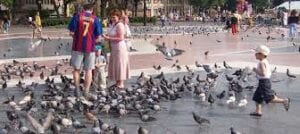
“The five died due to asphyxiation, possibly caused by the presence of gases trapped in the abandoned well. Forensic investigators have been called to the spot to tell us what exactly caused the deaths inside the well,” said AK Sharma, deputy inspector general of police, Ahmedabad division.
The tragedy unfolded with a farmer Pratapsinh Chauhan, 48, spotting a baby pigeon, which accidentally hopped into the well at his farm. Pratap decided to go down the well to rescue it.
“Pratap wanted to rescue the bird and climbed down the well. Some aged farmers working at the neighbouring farm saw him and went down the well to rescue Pratap when he did not emerge,” said an official of Umreth police station.
Pratap was followed down the well by Sana Parmar, 65 and Khiman Parmar, 70. When the farmers failed to return, their family members — Natwar Parmar, 33, Gita Parmar, 32 and Shankar Parmar, 25 — climbed down the dry well to rescue their kin.
Except for Pratap, on one returned alive. When the six persons failed to turn up, the villagers panicked and called for help. All the six were taken out of the well with help of police and Umreth fire brigade personnel.
The victims were rushed to a hospital in Nadiad where the Parmars were declared ‘brought dead’.
Mysteriously though the rescue workers who got the victims out of the dry well said, “We could not locate any pigeon down there.”
Umreth police officials who are investigating the case said, “Only Pratap can tell us why he went down the well. He is unconscious and under treatment.”
Source
Pigeon Patrol Products & Services is the leading manufacturer and distributor of bird deterrent (control) products in Canada. Pigeon Patrol products have solved pest bird problems in industrial, commercial, and residential settings since 2000, by using safe and humane bird deterrents with only bird and animal friendly solutions. At Pigeon Patrol, we manufacture and offer a variety of bird deterrents, ranging from Ultra-flex Bird Spikes with UV protection, Bird Netting, 4-S Bird Gel and the best Ultrasonic and audible sound devices on the market today.
Voted Best Canadian wholesaler for Bird Deterrent products ten years in a row.
Contact us at 1- 877– 4– NO-BIRD, (604) 585-9279 or visit our website at www.pigeonpatrol.ca
Pigeon/Pigeon Patrol / Pigeons Roosting / Vancouver Pigeon Control /Bird Spikes / Bird Control / Bird Deterrent / Pigeon Deterrent? Surrey Pigeon Control / Pest /Seagull deterrent / Vancouver Pigeon Blog / Birds Inside Home / Pigeons in the cities / Ice Pigeons/ What to do about pigeons/ sparrows , Damage by Sparrows, How To Keep Raccoons Away, Why Are Raccoons Considered Pests/ De-fence / Pigeon Nesting/ Bird Droppings / Pigeon Dropping/ woodpecker control/ Professional Bird Control Company/ Keep The Birds Away/ Birds/rats/ seagull/pigeon/woodpecker/ dove/sparrow/pidgeon control/pidgeon problem/ pidgeon control/flying rats/ pigeon Problems/ bird netting/bird gel/bird spray/bird nails/ bird guard
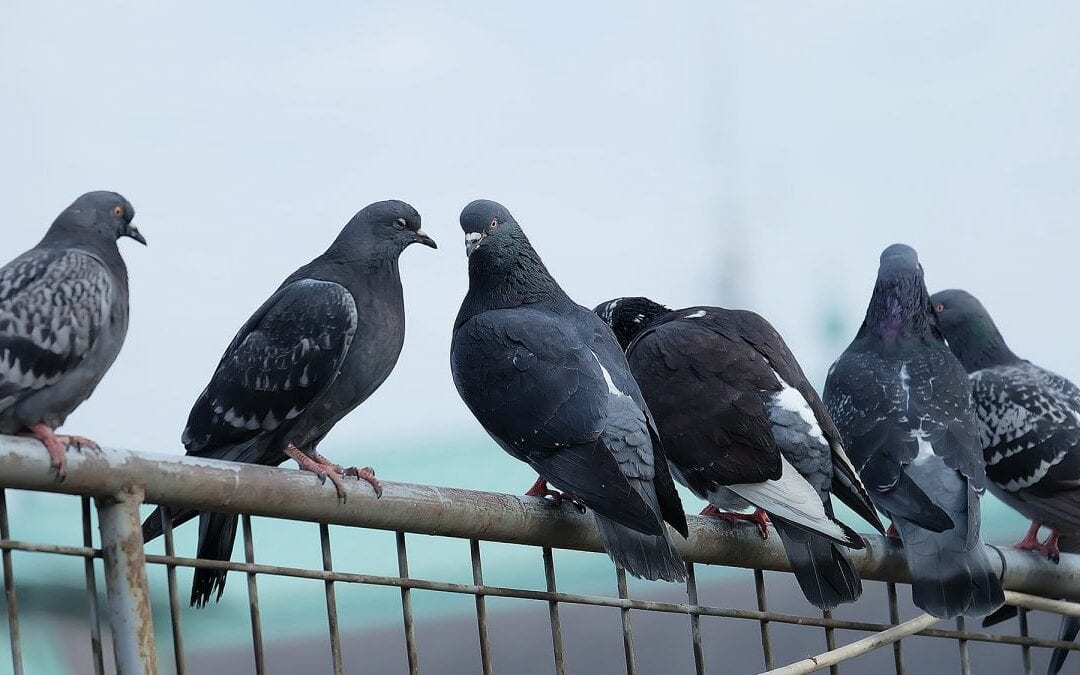
by Pigeon Patrol | Jun 28, 2021 | Bird Netting, history of pigeons, MBCA, pet bird, Pigeon Droppings, Pigeon Patrol's Services
Pigeons (or rock doves), ubiquitous urban birds, are the descendants of birds brought from Europe centuries ago who escaped from captivity and reverted back to the wild. Many city residents and visitors find pigeons pleasant and interesting.
Pigeon Facts
Pigeons mate for life, and both parents care for their young. They flock in large numbers in order to protect themselves from predators. Pigeons naturally stabilize their own populations in accordance with the food supply and other factors. They can fly up to 50 miles per hour and can travel up to 500 miles in one day.1 Their hearing and vision are both excellent.
Pigeons’ navigational abilities, which are largely dependent on keen vision and a superlative memory for topographic details, are legendary. A 10-year study of pigeon flight patterns conducted at Oxford University found that the birds rely more on their knowledge of human transport routes than on their internal magnetic compasses; one scientist said, “We followed some which flew up the Oxford bypass and even turned off at particular junctions. It’s very human-like.”2 One behavioral psychologist who studies pigeons remarked, “Pigeons commit new images to memory at lightning speed. . . . They organize images of things into the same logical categories that human beings use when we conceptualize.”3
The Disease Myth
The most widespread misconception about urban pigeons is that they are carriers of disease. Pest-control companies charge them with transmitting any number of diseases, but the truth is that the vast majority of people are at little to no health risk from pigeons. A search of epidemiological studies over more than 60 years found so few cases of diseases transmitted from feral pigeons to humans that the researchers concluded, “Although feral pigeons pose sporadic health risks to humans, the risk is very low, even for humans involved in occupations that bring them into close contact with nesting sites.”4
Histoplasmosis, cryptococcosis, and psittacosis are diseases that can be transmitted to humans from contact with bird feces, but the risk is considered to be small, with people who have compromised immune systems at the greatest risk.5 Psittacosis is usually associated with parrots in captivity.6
Poison Does Not ‘Control’ Pigeons
When people contact pest-control companies for advice on how to resolve conflicts with birds, operators often recommend using avicides, or bird poisons, such as Avitrol and DRC-1339, to “control” bird populations. Companies often tell potential customers that Avitrol and other avicides are “flock-dispersing agents” that “scare” birds away from areas where they are not wanted. They’ll even tell customers that these products are humane, but nothing could be further from the truth. Avicides such as Avitrol are acutely toxic and cause birds and other animals to suffer immensely. Avitrol attacks and impairs birds’ nervous systems. This causes birds who ingest the poison to become disoriented, exhibit erratic flight and tremors, and suffer violent convulsions for hours before they finally succumb to the effects of the toxin. Avitrol has been banned in New York City; San Francisco; Boulder, Colorado; and Portland, Oregon.7
A study published in the journal Veterinary Microbiology cautioned that killing pigeons “by shooting or poisoning is both unethical and ineffective as the place of the killed birds in the population is quickly filled by new juveniles or immigrating birds from neighbouring areas.”8 Any successful method of bird control must concentrate on prevention and making the location inhospitable to birds.
What You Can Do
For starters, don’t feed birds, and eliminate food and litter from the area. Excluding birds from an area and conditioning them to avoid the area are both effective, humane ways of dealing with a pigeon overpopulation problem. Conditioning birds to avoid an area should be done as early as possible in order to effectively discourage the birds from settling in.
Very simple modifications in a building’s structure can discourage birds from landing or nesting on the building. Steel, wood, or stone angled on building ledges prevents pigeons from nesting there. Open areas, such as vents, lofts, or eaves, can be sealed up to prevent pigeons from nesting in them. Bird barriers, including a thin metal coil that resembles a “slinky” toy, can be fastened to a building ledge to discourage birds from landing.
NEVER use sticky, transparent, bird “repellent” caulk. This substance is applied to ledges in the hope that birds will land, feel the stickiness of the caulk, and fly off, never to return. It is extremely dangerous because birds can easily get stuck to the ledges and lose wings or legs as they try to free themselves, or their wings may stick to their bodies, causing them to fall when they try to fly. They can also ingest the substance while cleaning themselves and die of poisoning.
Visual deterrents such as revolving lights, mirrors, or effigies of predator birds can also be effective.
Source
Pigeon Patrol Products & Services is the leading manufacturer and distributor of bird deterrent (control) products in Canada. Pigeon Patrol products have solved pest bird problems in industrial, commercial, and residential settings since 2000, by using safe and humane bird deterrents with only bird and animal friendly solutions. At Pigeon Patrol, we manufacture and offer a variety of bird deterrents, ranging from Ultra-flex Bird Spikes with UV protection, Bird Netting, 4-S Bird Gel and the best Ultrasonic and audible sound devices on the market today.
Voted Best Canadian wholesaler for Bird Deterrent products ten years in a row.
Contact us at 1- 877– 4– NO-BIRD, (604) 585-9279 or visit our website at www.pigeonpatrol.ca
Pigeon/Pigeon Patrol / Pigeons Roosting / Vancouver Pigeon Control /Bird Spikes / Bird Control / Bird Deterrent / Pigeon Deterrent? Surrey Pigeon Control / Pest /Seagull deterrent / Vancouver Pigeon Blog / Birds Inside Home / Pigeons in the cities / Ice Pigeons/ What to do about pigeons/ sparrows , Damage by Sparrows, How To Keep Raccoons Away, Why Are Raccoons Considered Pests/ De-fence / Pigeon Nesting/ Bird Droppings / Pigeon Dropping/ woodpecker control/ Professional Bird Control Company/ Keep The Birds Away/ Birds/rats/ seagull/pigeon/woodpecker/ dove/sparrow/pidgeon control/pidgeon problem/ pidgeon control/flying rats/ pigeon Problems/ bird netting/bird gel/bird spray/bird nails/ bird guard
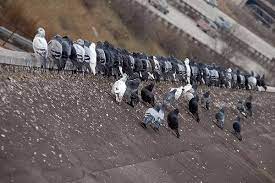
by Pigeon Patrol | Jun 21, 2021 | MBCA, pet bird, Pigeon Control, Pigeon Droppings, Pigeon Patrol's Services, Pigeon Predators
Hanging on roof and window ledges throughout the Bay Area, pigeon spikes serve as one of the many deterrents that protect local buildings from the oft-maligned birds.
Pets Gone Wild
San Francisco’s pigeons are feral “rock doves.” Ornithologists believe the pigeon was the first domesticated bird, originally prized in the Middle East 6,000 years ago for the delicious meat of its squabs and the fertilizing prowess of its waste. Pigeons are highly adaptable; they nest in a wide variety of locations and will eat almost anything.
Flying Rodent?
An estimated 3.5 million feral pigeons live in the Bay Area. Large populations also live in New York City; London; Seville, Spain; Venice; and New Delhi. The characterization “rats with wings” became popular after it was used in Woody Allen’s 1980 film, “Stardust Memories.”
Edgy Critters
Pigeons are edge-landing birds. When landing above ground, they land only on peaks or at perimeters, where they can use their claws to grip for stability. To deter pigeons from a building, only those areas need to be blocked.
No Stabbing
Many pigeon spikes are not pointed. Birds Away/Pigeons Away, a 25-year-old company based in Concord, uses only blunt-ended prongs. It decided spikes were inferior to prongs because they injured birds and snagged flying debris like large leaves, newspapers and plastic bags.
Feathered Hero
Domestic carrier pigeons have been used for centuries to transmit messages during wartime. An American bird, G.I. Joe, received a medal for his courageous flight in World War II, traveling 20 miles to safeguard the lives of British soldiers.
Winged Plague
Pigeons can transmit heart and kidney diseases to humans, as well as salmonella and encephalitis. They also carry parasites like ticks, mites, fleas and lice.
Artistic Decision
The de Young Museum is protected from pigeons by an invisible “shock track” on its edges that is charged with a low voltage.
Bird Brains
At the Balboa Park BART station, pigeons tried to nest between the spikes, but they got stuck and eventually starved. BART has also tried to deter pigeons with fake owls and rubber snakes.
Ugly and Injurious
Highly acidic pigeon feces can corrode paint and most metals. The droppings on sidewalks can also lead to liability issues, like slip-and-fall lawsuits.
Source
Pigeon Patrol Products & Services is the leading manufacturer and distributor of bird deterrent (control) products in Canada. Pigeon Patrol products have solved pest bird problems in industrial, commercial, and residential settings since 2000, by using safe and humane bird deterrents with only bird and animal friendly solutions. At Pigeon Patrol, we manufacture and offer a variety of bird deterrents, ranging from Ultra-flex Bird Spikes with UV protection, Bird Netting, 4-S Bird Gel and the best Ultrasonic and audible sound devices on the market today.
Voted Best Canadian wholesaler for Bird Deterrent products ten years in a row.
Contact us at 1- 877– 4– NO-BIRD, (604) 585-9279 or visit our website at www.pigeonpatrol.ca
Pigeon/Pigeon Patrol / Pigeons Roosting / Vancouver Pigeon Control /Bird Spikes / Bird Control / Bird Deterrent / Pigeon Deterrent? Surrey Pigeon Control / Pest /Seagull deterrent / Vancouver Pigeon Blog / Birds Inside Home / Pigeons in the cities / Ice Pigeons/ What to do about pigeons/ sparrows , Damage by Sparrows, How To Keep Raccoons Away, Why Are Raccoons Considered Pests/ De-fence / Pigeon Nesting/ Bird Droppings / Pigeon Dropping/ woodpecker control/ Professional Bird Control Company/ Keep The Birds Away/ Birds/rats/ seagull/pigeon/woodpecker/ dove/sparrow/pidgeon control/pidgeon problem/ pidgeon control/flying rats/ pigeon Problems/ bird netting/bird gel/bird spray/bird nails/ bird guard

by Pigeon Patrol | Jun 14, 2021 | Bird Spikes, Columbidae, Doves, history of pigeons, MBCA, Pigeon Droppings
Odors are known to be essential for navigation during homeward orientation and migration of some bird species. Yet little was known about their chemical composition. An international team has now identified volatile organic compounds that can be used for olfactory navigation by homing pigeons and proved the existence of suitable regional chemical gradients in the air on a landscape-scale in Tuscany.
Many bird species can find their way home even after being brought to remote or unfamiliar locations. Over 40 years of research on homing pigeons have shown that environmental odors play a crucial role in this process. Yet the chemical identity of these odors has remained a mystery. An international team of scientists from the Max Planck Institutes for Chemistry (Mainz) and of Animal Behavior (Radolfzell), and the Universities of Konstanz, Pisa and Mainz has now identified potential chemical navigational cues that could be used by homing pigeons. Based on the collected data, the researchers were also able to create regional olfactory maps for marine emissions, biogenic compounds, and anthropogenic mixed air and to establish the existence of regional navigable chemical gradients in the air.
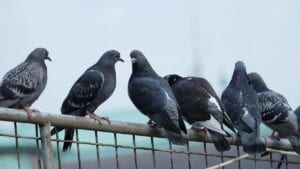
During the scientific mission, which took place in 2017 and 2018 in the Italian region of Tuscany, the researchers measured a suite of airborne volatile organic compounds (VOCs) over a period of months at the pigeon’s home aviary. Some of these compounds are emitted by trees, the pine fragrance one smells during a walk in the forest. Other pungent natural emissions come from the sea, while still further VOCs can be emitted from industry. The measurements enabled regional maps to be constructed connecting chemicals with wind direction and speed. Additional measurements were taken in selected regional forest environments and by air using an ultralight plane flying at 180 meters – the average altitude of flying pigeon. The scientists merged the information they had gathered during the field campaigns with GPS tracks obtained from released birds. Thus, they generated multiple regional, horizontal and vertical spatial chemical gradients that can form the basis of an olfactory map.
Olfactory maps based on environmental odors
“Ornithologists from Germany and Italy have shown in more than 40 years of experiments, that pigeons use airborne odors to navigate home,” explains Nora Zannoni, post-doctoral researcher at Max Planck Institute for Chemistry and the study’s first author. Those results have shown that pigeons construct an olfactory map based on the distribution of environmental odors they have perceived over several months at the home aviary. This knowledge is then used as a compass at the point of release to return back home from unfamiliar sites. “By proving the existence of regional chemical gradients in the air around the experimental site we provide support for the olfactory navigation hypothesis and with atmospheric measurements we have found which chemicals can be used for navigation,” adds Zannoni. Some compounds come from forested areas (monoterpenes) or the sea (DMS) while others are emitted from cities and industrial complexes (trimethylbenzene), spots that act like chemical lighthouses.
One of the biggest challenges during this research campaign was its multidisciplinary character. “We had to combine the different approaches of several scientific disciplines – atmospheric and analytical chemistry, ornithology and animal behavior, computer science and statistics,” says Martin Wikelski, managing director at the Max Planck Institute of Animal Behavior.
“It’s amazing really,” adds Jonathan Williams the project leader at the MPIC’s Atmospheric Chemistry Department in Mainz. “We uncovered these chemical gradients using several tones of ultrasensitive scientific equipment, but the same complex odor information can be analyzed and converted to a regional map by a 400-gram pigeon.”
Source
Pigeon Patrol Products & Services is the leading manufacturer and distributor of bird deterrent (control) products in Canada. Pigeon Patrol products have solved pest bird problems in industrial, commercial, and residential settings since 2000, by using safe and humane bird deterrents with only bird and animal friendly solutions. At Pigeon Patrol, we manufacture and offer a variety of bird deterrents, ranging from Ultra-flex Bird Spikes with UV protection, Bird Netting, 4-S Bird Gel and the best Ultrasonic and audible sound devices on the market today.
Voted Best Canadian wholesaler for Bird Deterrent products ten years in a row.
Contact us at 1- 877– 4– NO-BIRD, (604) 585-9279 or visit our website at www.pigeonpatrol.ca
Pigeon/Pigeon Patrol / Pigeons Roosting / Vancouver Pigeon Control /Bird Spikes / Bird Control / Bird Deterrent / Pigeon Deterrent? Surrey Pigeon Control / Pest /Seagull deterrent / Vancouver Pigeon Blog / Birds Inside Home / Pigeons in the cities / Ice Pigeons/ What to do about pigeons/ sparrows , Damage by Sparrows, How To Keep Raccoons Away, Why Are Raccoons Considered Pests/ De-fence / Pigeon Nesting/ Bird Droppings / Pigeon Dropping/ woodpecker control/ Professional Bird Control Company/ Keep The Birds Away/ Birds/rats/ seagull/pigeon/woodpecker/ dove/sparrow/pidgeon control/pidgeon problem/ pidgeon control/flying rats/ pigeon Problems/ bird netting/bird gel/bird spray/bird nails/ bird guard
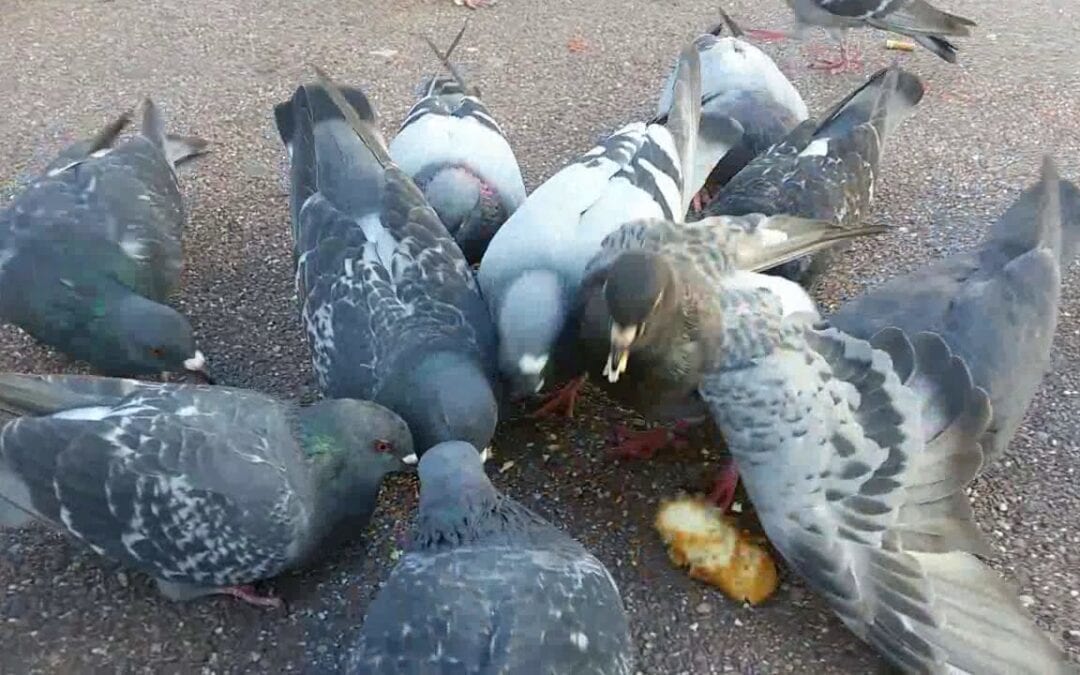
by Pigeon Patrol | Jun 14, 2021 | history of pigeons, MBCA, pet bird, Pigeon Control, Pigeon Droppings, Pigeon Patrol's Services, Pigeon Predators
The passenger pigeon (Ectopistes migratorius) is an extinct pigeon that was once widespread throughout North America. It was possibly the world’s most abundant bird in those times with the total population of almost three billion. The extinction of a bird that was once numbered in millions leaves biologists to wonder how it went extinct. The passenger pigeon is also called wild pigeon.
Passenger Pigeon Facts
- The overall length of an adult male was about 39 to 41 cm (15.4 to 16.1 in) and they weighed up to 260 and 340 g (9 and 12 oz).
- Adult females averaged 38 to 40 cm (14.9 to 15.7 in) in head-body length. It had dull colored feathers as compared to males down. However the female had a brown forehead that looked like a crown.
- Adult males had 175–210 mm (6.8–8.2 in) long tail females had 150–200 mm (5.9–7.8 in).
- The bird’s tarsus measured about 26–28 mm (1–1.1 in).
- The measurement of the male’s wing was about 196–215 mm (7.7–8.4 in) and it had 15–18 mm (0.6–0.7 in) long bill. The size of the bill was same in both males and females.
- Like many other pigeon species, the passenger pigeon was mainly recognized by its bluish-gray head and neck. There are iridescent feathers on the sides of the neck and they are bright brown to golden green in color. It goes bright when the light shines on it.
- The passenger pigeon’s tail had got some blackish spots that were clearly visible when the bird was flying.
- The legs and feet were red but the pigeon’s was completely black.
- Young pigeon appeared more like an adult female (in physical features) but unlike female it did not have spots on its wings.
- They had long pointed wings which were extremely helpful in flying fast. Passenger pigeons were adapted to not only fly fast but it could also maneuver itself rather quickly. Today pigeons lack this ability.Geographic Range & Habitat
- The passenger pigeon had occupied much of the North America including Atlantic coast in the east, Rocky Mountains, Great Plains, north of Mississippi, and south of Canada.
- They had made homes in primary habitats like deciduous forests. Passenger pigeons used to prefer forests that were abundant in white oaks.
- A large number of pigeons used to breed in the southern Ontario, Georgia, Oklahoma, Great Lakes states, North Carolina, Gulf Coast, northern Florida, and southern Pennsylvania. Passenger pigeon’s range extended as far as Bermuda, Mexico, Cuba, Ireland, and France.
- Passenger pigeons were noisy birds and they used to produce loud alarm calls such as cluck cluck or sometimes harsh sound like “kee-kee-kee-kee” or “tete! tete! tete!”.
- It was thought to be highly migratory traveling hours searching for food. The bird had long inspired the 19th century observers as it flew in flocks that could number in billions.
- The passenger pigeon’s flock was so enormous that one could not see the hint of sky while they flew.
- Pigeons used to fly as high as 1,300 ft (400 m) above the ground.
- During migration the speed at which the passenger pigeon used to travel was 62 mph (100 km/h).
- It had got the ability to maneuver itself in a narrow space and could also fly fast while going through the forests. However fast they might be in the air, passenger pigeons walked awkwardly on land.
- In those times passenger pigeons were believed to be social of all birds.
- When the entire flock needed to roost they found dense forests where the tree branches were thick enough to support the strain of million birds. Individual pigeons piled up on one another instead of sitting just next to it. As it turned out, if the branch was not strong it could break and the birds fell on land.
- They used to bathe in shallow water such as small ponds, streams, or lakes. Passenger pigeons typically bathe minutes after the day breaks.
- They used to drink once a day.
- The average lifespan of passenger pigeons was 15 years in captivity.
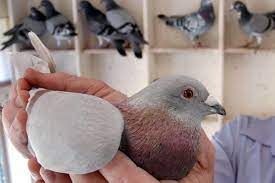
Feeding Ecology & Diet
- Passenger pigeons used to rely on mast that was produced from the trees of oaks and beeches. However they had a varied diet that changed seasonally.
- Passenger pigeon’s diet included grapes, mulberries, acorns, chestnuts, cherries, beechnuts, dogwoods, and pokeberries.
- In winter they relied more on nuts while in summer fruits made up much of their diet.
- Passenger pigeons also ate insects and invertebrates including worms, caterpillars, buckwheat, and snails.
- They are believed to fly 62 to 81 mi (100 to 130 km) a day from their roosting sites. Some of them could even travel 100 miles in a day.
- It could also hold many grains of corn or chestnuts in its crop. Passenger pigeons were able to eat 0.1 kg (0.22 lb) of acorns each day.
Reproductive Biology
- The nesting period lasted about 28 – 42 days. Biologists aren’t clear precisely how many times they used to mate in a year.
- Passenger pigeons used to gather on the breeding grounds from March to May.
- They had large colonies that could expand to thousands of acres but the average size was 120 acres (49 ha).
- The female chose a nesting site while the male held responsible for bringing materials and building a nest. It could take 2 – 4 days to build a complete nest. The male usually made nests with twigs.
- Nests were located 6.5 and 66 ft (2.0 and 20.1 m) above the ground and measured 6 in (15 cm) in width. The height of the nest was 2.4 in (6.1 cm) and the bowl was 0.75 in (1.9 cm) deep.
- Passenger pigeons used to mate for life.
- A female laid 1 – 2 white oval-shaped eggs. Eggs measured about 1.56 in (40 mm) by 32 in (34 mm) in size.
- Both parents incubated the eggs that lasted 12 – 14 days.
- Hatchlings were born blind and they are fed by parents for up to two weeks.
- The duration of a passenger pigeon’s nesting cycle is about one month.
- Predators of passenger pigeons were American weasels, raccoons, wolves, mountain lions, owls, hawks, bobcats, bears, American martens, and foxes. Cooper’s hawk was thought to be the main predator which could catch passenger pigeons in flight.
Pigeon Patrol Products & Services is the leading manufacturer and distributor of bird deterrent (control) products in Canada. Pigeon Patrol products have solved pest bird problems in industrial, commercial, and residential settings since 2000, by using safe and humane bird deterrents with only bird and animal friendly solutions. At Pigeon Patrol, we manufacture and offer a variety of bird deterrents, ranging from Ultra-flex Bird Spikes with UV protection, Bird Netting, 4-S Bird Gel and the best Ultrasonic and audible sound devices on the market today.
Voted Best Canadian wholesaler for Bird Deterrent products ten years in a row.
Contact us at 1- 877– 4– NO-BIRD, (604) 585-9279 or visit our website at www.pigeonpatrol.ca
Pigeon/Pigeon Patrol / Pigeons Roosting / Vancouver Pigeon Control /Bird Spikes / Bird Control / Bird Deterrent / Pigeon Deterrent? Surrey Pigeon Control / Pest /Seagull deterrent / Vancouver Pigeon Blog / Birds Inside Home / Pigeons in the cities / Ice Pigeons/ What to do about pigeons/ sparrows , Damage by Sparrows, How To Keep Raccoons Away, Why Are Raccoons Considered Pests/ De-fence / Pigeon Nesting/ Bird Droppings / Pigeon Dropping/ woodpecker control/ Professional Bird Control Company/ Keep The Birds Away/ Birds/rats/ seagull/pigeon/woodpecker/ dove/sparrow/pidgeon control/pidgeon problem/ pidgeon control/flying rats/ pigeon Problems/ bird netting/bird gel/bird spray/bird nails/ bird guard


